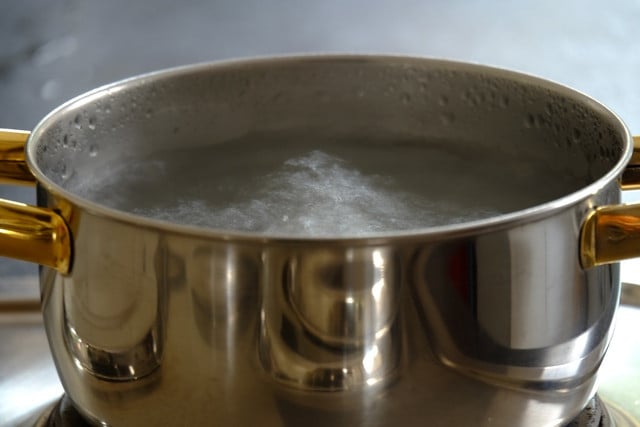
Chest wraps are a tried and tested home remedy for coughs or bronchitis. Here you can find out how the wrap helps and what you should bear in mind when using it.
Chest wraps are used as a traditional home remedy for respiratory diseases, especially coughs or symptoms of bronchitis.
A chest wrap is a compress that is wrapped around the chest from the armpit to the ribs. You can use chest wraps warm or cold depending on the symptoms. You can also support their effect with additives such as thyme tea.
The sooner you use them, the better they work. Applying a chest wrap at the first signs of a cold is said to prevent the disease from developing completely. You can also use the wrap on children – just don’t wrap it too tightly.
Warm chest wrap

(Photo: CC0 / Pixabay / music4life)
A warm or hot chest wrap is particularly helpful for persistent dry coughs. The warmth of the wrap has a relaxing and calming effect. It also helps to loosen and remove mucus from the respiratory tract.
Important: If you have a fever, you should not use a warm chest wrap. The chest wrap could cause your body temperature to rise even further.
A chest wrap is applied while lying down. You should have everything you need ready for the application. For a warm chest wrap you need the following:
- 1 large, heat-resistant bowl
- 1 small towel or tea towel made of cotton
- 1 medium-sized cotton towel
- 1 warm scarf (e.g. made of wool)
- optional: thyme tea
That’s how it works:
- Boil plenty of water in the kettle. Pour it into the bowl and let it cool for about five minutes. Tip: If you want, you can add a tablespoon of thyme tea to the water.
- Soak the small towel or dishcloth in the hot water. Wring it out thoroughly and quickly check the temperature on the inside of your wrist. If the temperature is hot but comfortable, wrap the damp towel tightly around the sick person’s chest.
- Immediately wrap the second towel around the first layer of the wrap and then the scarf over it. No air should get to the chest. It is best to also cover the person with a thick blanket.
- The duration of the wrap can vary from a quarter of an hour to an hour. It is important that the wrap is pleasantly warm the whole time. Afterwards, the sick person should rest for at least 15 minutes.
Cold chest wrap

(Photo: CC0 / Pixabay / Free-Photos)
A cold chest wrap has a calming and cooling effect, is anti-inflammatory and stimulates blood circulation. It can reduce fever and also helps the body to loosen and remove mucus in the respiratory tract.
The cold chest wrap is also applied while lying down. You will need the following things:
- 1 large bowl
- 1 small towel or tea towel made of cotton
- 1 medium-sized cotton towel
- 1 warm scarf (e.g. made of wool)
That’s how it works:
- Pour plenty of lukewarm water into the bowl.
- Soak the small towel or dishcloth in the water. Then wring it out thoroughly.
- Wrap the cloth tightly, but in a way that is comfortable, around the sick person’s chest.
- Then wrap the second towel around the first layer of the wrap and then the scarf over it. No air should get to the chest. It is best to also cover the person with a thick blanket.
- The cold chest wrap can be applied for up to an hour. After that, the sick person should keep warm and rest for at least another 15 minutes.
When should you not use breast wraps?

(Photo: CC0 / Pixabay / CapeCom)
A chest wrap provides relief. However, you should not always use this remedy. As mentioned above, you should avoid a warm chest wrap if you have a fever. You should also avoid a chest wrap in the following cases:
- If you are very weak, you should not use chest wraps.
- You should also not use cold chest wraps if your body is cold – that is, if you are freezing or have chills.
- Opinions vary widely as to when a breast wrap can be used on babies. It is best to ask your pediatrician.
Read more on Techzle\.com:
- Potato wrap: How to use this home remedy correctly
- Make your own liver wrap: application and effect
- Quark wrap: home remedy for pain and inflammation
Revised by Lea Hermann
** marked with ** or orange underlined Links to sources are partly affiliate links: If you buy here, you are actively supporting Techzle\.com, because we then receive a small part of the sales proceeds. .